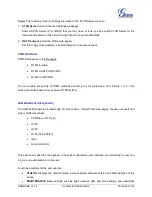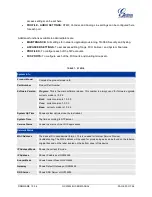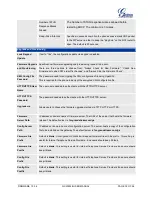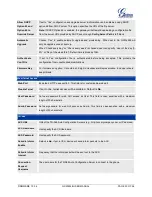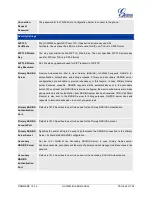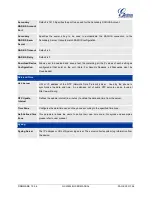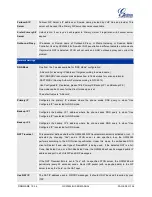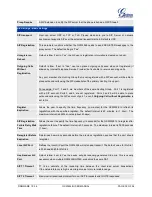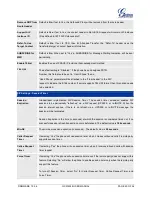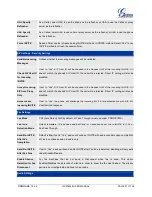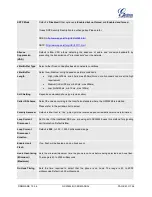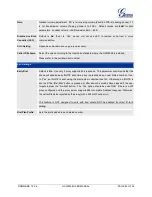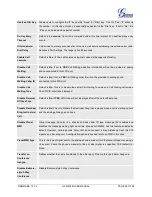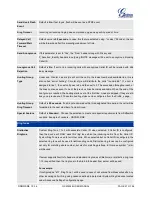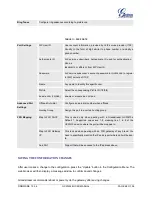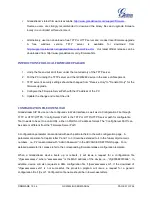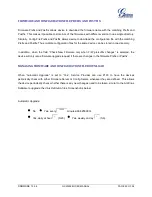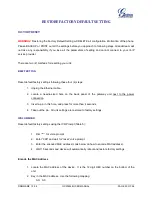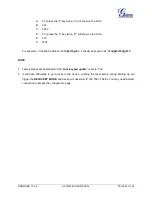
FIRMWARE 1.0.3.4
GXW4248 USER MANUAL
PAGE 43 OF 54
SRTP Mode
Default is
Disabled
. Other options are
Enabled but not forced
, and
Enabled and forced
.
It uses SDP Security Description to exchange key.
Please refer
SDES:
http://www.apps.ietf.org/rfc/rfc4568.html
SRTP:
http://www.apps.ietf.org/rfc/rfc3711.html
Silence
Suppression
(VAD)
Default is
No
. VAD allows detecting the absence of audio and conserve bandwidth by
preventing the transmission of "silent packets" over the network.
Jitter Buffer Type
Select either Fixed or Adaptive based on network conditions.
Jitter Buffer
Length
Select Low, Medium or High based on network conditions.
•
High (initial 200ms, min 40ms, max 600ms) Note: not all vocoders can meet the high
requirement
•
Medium (initial 100ms, min 20ms, max 200ms)
•
Low (initial 50ms, min 10ms, max 100ms)
SLIC Setting
Depends on standard phone type (and location)
Caller ID Scheme
Select the value according to the local Telco standard where the GXW4248 is installed.
Please refer to the pull down list to select.
Polarity Reversal
Default is
No
. If set to “Yes”, polarity will be reversed upon call establishment and termination.
Loop Current
Disconnect
Set to Yes if the traditional PBX you are using with GXW4248 uses this method for signaling
call termination. Default is
No
.
Loop Current
Disconnect
duration
Default is
200
. In 100 - 1 0000 milliseconds range.
Enable Hook
Flash
If no, flash will be treated as an on hook event.
Hook Flash timing
(Minimum)/
(Maximum)
Sets the minimum/maximum time the phone is on hook before being detected as a hook flash.
The range is 40 to 2000 milliseconds
On Hook Timing
Sets the time required to detect that the phone is on hook. The range is 40 to 2000
milliseconds. Default is 400 milliseconds.

